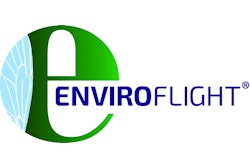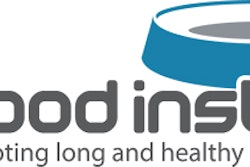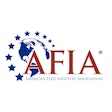
During a Petfood Forum 2023 Lunch n’ Learn session on May 2, members of a Pet Food Institute (PFI) panel discussion on the pet food regulatory process were in agreement: It’s time for things to change.
PFI President and CEO Dana Brooks, EnviroFlight President Liz Koutsos, Ph.D., and President and General Manager of Nutrition Solutions George Collings, Ph.D., got together to discuss the current “patchwork” state of pet food regulations, the challenges involved in getting pet food products approved for sale in different states (each of which has its own set of regulations), and what needs to be done in order to take pet food regulation into the future.
“I want consumers to have good information,” said Collings, which is nearly impossible when the industry is dealing with state, federal, congressional and association regulations all competing for dominance. “Consumers want and expect that all companies are playing by the same rules.”
One of the significant problems, however, is that those rules can be different depending on where said consumers live.
“We can’t make pet food for a single state,” said Brooks. “This is a global economy. We are national and international; it’s not regional anymore.”
18 months of considerations
The last 18 months for Brooks and PFI have been a whirlwind of non-disclosure agreements, meetings with industry, conversations with stakeholders and relevant parties, and an overall sense of needing to bring about change at the federal level.
“When you have those tipping points in your life, sometimes you're like ‘I have to do this,’” said Brooks. “During COVID-19 shutdown, my colleagues at PFI and I were hearing about the challenges that member companies were experiencing with the supply chain, product label review process, and the competition for ingredients due to the growth of renewable diesel. We needed to be able to adapt and modernize — to encourage innovation, if you will. Every option was laid out as we tried to figure out how to operate through the current regulatory system. No matter what potential solution we came up with to provide uniformity and transparency, a lack of consistent interruption by individual states would always hold us back.”
As it turns out, the industry seems to feel the same.
“The more we started talking about this, the more examples have been presented to me: Of a veterinarian diet that had to be pulled from a state because of an interpretation, and then the veterinary community was upset,” said Brooks. “Of how trying to get novel ingredients, such as black soldier fly larvae or any other ingredient that may be more sustainable, reviewed and approved proved to be a challenge. All states must agree to the ingredients and the label to avoid interstate commerce disruptions.
“Members made the decision for PFI to scope out and invest in this project,” she said. “And obviously we made some strategic decisions: Is this a priority for us at PFI? A priority for our industry? Are we willing to cut resources in other places to make this a priority? And unanimously, it was yes. Not just a little bit of support, but 100% for everyone in this from start to finish.”
Modernizing pet food regulation: A complex goal
Buy-in is vital for any plan to succeed, but that doesn’t mean the path forward is clear or simple.
“There are some things that we need to navigate and negotiate within our current structure,” said Brooks. “How do we transition from state registrations to one federal oversite office? What's the appropriate time of transitioning? How can we ensure no harm between today and the implementation of it all? Obviously, there's going to be a lot more internal conversations with states, with AAFCO, with the FDA and with the members of Congress that have a keen interest in supporting this change.”
One of the biggest challenges, said Brooks, will be the states, who have had a lot of authority over dog and cat food for some time, as well as revenue coming in from licensing pet food products to be sold in nearly all states. But she’s hoping that the states will look at the efficiencies of the final outcome and be able to see the benefits to everyone involved.
“We've exhausted every other option to think about how we work within the current system,” said Brooks. “And then coming out of that, there's really only one answer and it's one federalized system.”
Brooks is quite clear on the point that this affects dog and cat food only. The animal feed system currently in place won’t change, state-overseen inspections like the Food Safety Modernization Act (FSMA) inspections will remain the states’ responsibilities, and any FDA agreements with the states will remain intact.
“We're willing to go through a transition period,” said Brooks. “This isn't going to happen tomorrow. It's two to four years at best. And in that time, my hope is that, when things change all parties will look at how they can be more focused, innovative and stronger in another area.”
The word is out: It’s time to ask questions
Being able to launch such a huge project in confidence really made a difference, said Brooks, and the taskforce that has been going strong for the last 18 months was able to hash out the problem and analyze potential solutions away from the larger industry in order to bring an actual plan forward for consideration.
“The fact that we can work on this for about 18 months in solidarity, in confidence, and never leak it is proof of commitment from the people in the room who felt the exact same way,” said Brooks. “[That] this is big, and we really need to do a lot of work about how this can be presented.”
When the group began slowly spreading the word, there was industry disappointment about not being involved from the start, which Brooks said she empathizes with.
“I just had to say, ‘This is the appropriate time now,’” she said. “Because we've had to be able to take the problems, create a solution, to go back and forth and move it forward. And you know, the bigger the room the bigger the challenges. So that's been a hard thing to explain to some of my friends in the industry, but now's your time. Bring me your questions, bring me your concerns. We want to hear it because we don't want to get it wrong, either. If you're an ingredient supplier and you don't understand what this means for your company, come to us. If you’re in the feed industry and want to know what this means for you, come see us. If you're a state regulator, come to us. This isn't going to happen overnight. We're moving forward, but in that interim we've got to still work together.”
Trending: Pet Food podcast: What is the current state of regulation in pet food ingredients?
















